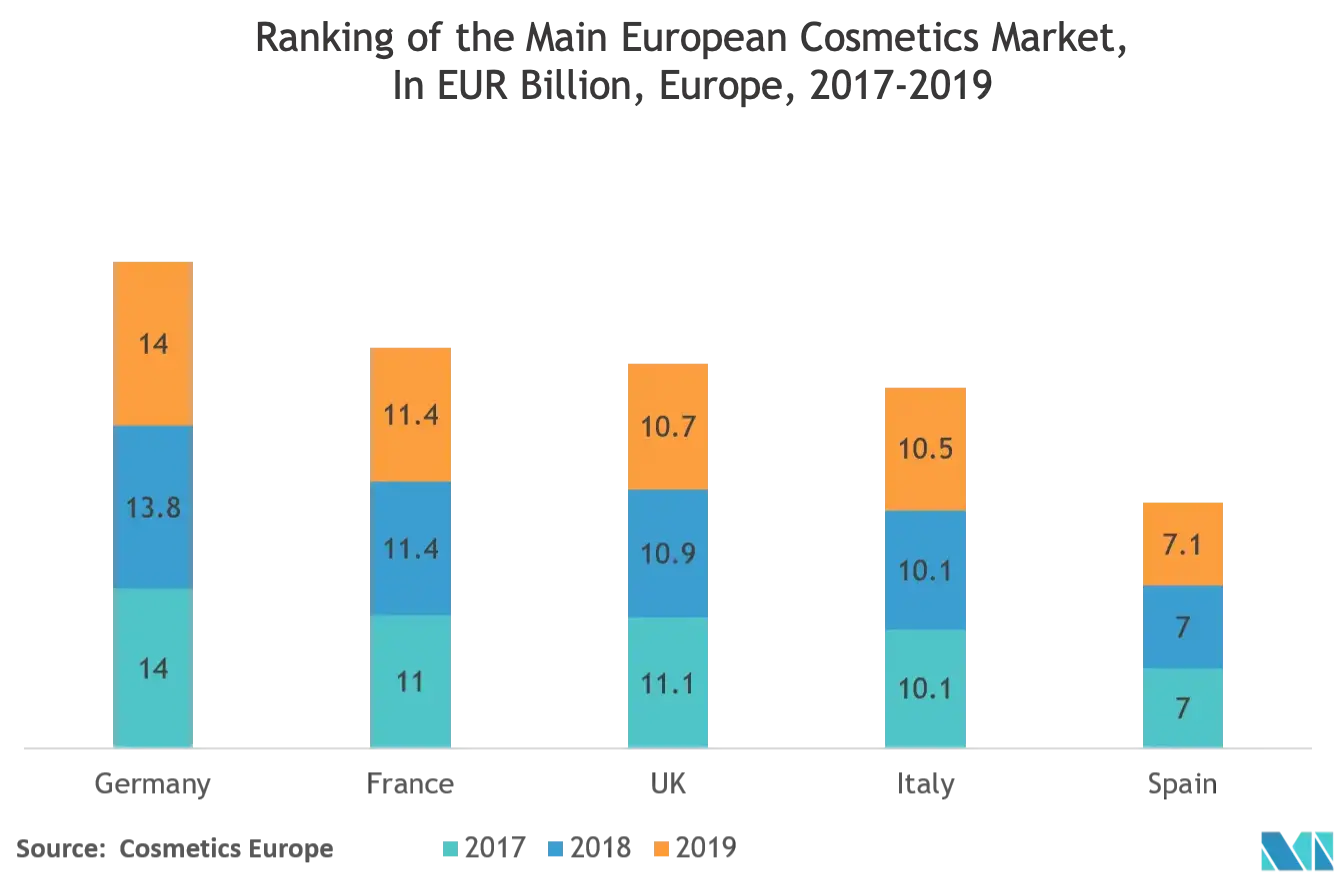Market Trends of Europe Cosmetic Packaging Industry
This section covers the major market trends shaping the Europe Cosmetic Packaging Market according to our research experts:
Tube and Stick Packaging to Drive Market Growth
- Tubes and stick types of cosmetic packaging offer convenience, portability, and flexibility to hold a wide range of semi-solid products. Owing to this benefit, they have been widely used in the cosmetic packaging market. Tube and stick packaging for beauty and cosmetic products are expected to grow over the forecast period, owing to the growing demand for skin care products from the end customers. The increasing preference for natural and organic beauty products in the region is expected to accentuate the growth of the market.
- For instance, approximately less than 50 % of all Europe's tubes go to the cosmetics sector. The rising incomes in Eastern European countries, coupled with constantly improving the standard of living, will further accentuate the demand for cosmetic products in this region.
- In March 2019, the European tube manufacturers' association announced that the tub industry in the region, owing to the rising demand, despite the considerable uncertainty and difficult economic environment, has expanded its overall production by 1% year-on-year to reach 11.5 billion units. This instance showcases the growing popularity of the tube with European consumers as a consumer-friendly, sustainable, and function form of packaging. Therefore, it is anticipated to drive the growth of the market in the region.
- Also, the steady growth of social media and online shopping in the region, including the United Kingdom, Germany, and Nordic, play a significant influence on the customers' purchasing decision where primary product packaging and shipping packaging has a vital role. The growth of e-commerce is also driving the cosmetics product that aids the growth of the tube packaging market.

France to Register Significant Growth
- France dominates the European cosmetic market due to the quality of products and constant innovation. According to the French Federation of Beauty Companies (FEBEA), the French cosmetics industry spends about 2% of its turnover in R & D each year.
- SMEs in the region make up most cosmetic manufacturers, which also export all over the EU nations. Moreover, French multinational conglomerates such as LVMH, L'oréal, and Estée Lauder own many of the world's most popular beauty brands. Over the centuries, France became the hub of beauty products and also became one of the French economy's revenues generator.
- The vendors in this region are keen on tackling the industry's plastic problem. Hence they are developing sustainable solutions for major players. For instance, L'Oréal has also partnered with Albéa to create the industry's first carton-based cosmetic tube, where a bio-based, paper-like material replaces plastic. The industrial production will begin in the second half of 2020.
- Additionally, In response to the rapid increase in the number of coronavirus cases in France, some of Manosque facilities that manufacture beauty and well-being products for the L'Occitane en Provence and Melvita brands have been reassigned to the production of verbena-scented hand sanitizer. The French federation for beauty companies (FEBEA) has also mobilized its network to ramp up production of hygiene and hydroalcoholic products amid the ongoing Covid-19 outbreak.


